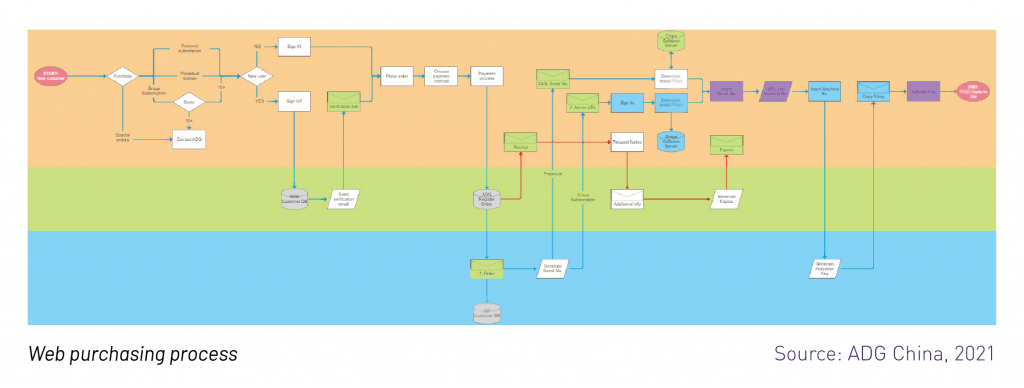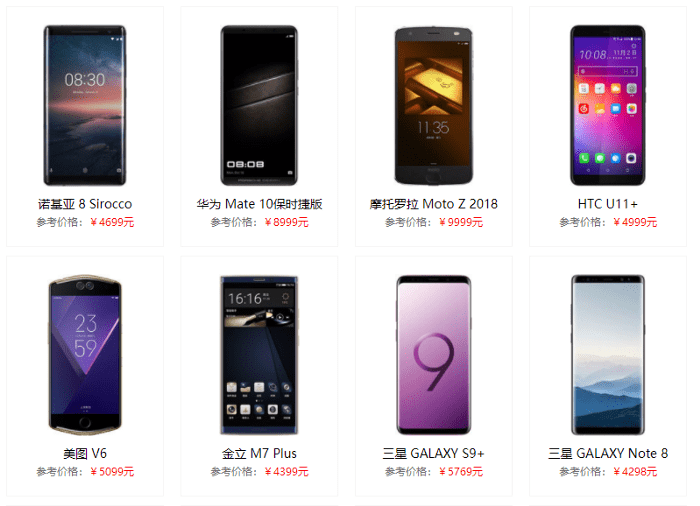Unlock Your China Software Sales: Is Your Reseller Network Holding You Back?
Written by ADG China
12/06/2023
Navigating The Chinese Software Market – Part 2
You're already selling your software in China and may have a couple of resellers, but the market is underperforming your expectations. What is happening, and how can you get more out of China?
In part one of this 3-part series, we discussed the friction that prevents your most attractive enterprise customer base, the ones you want, from buying your software even when they have the budget and a desire to purchase the authentic version. Read Part One here.
In this second part of the series, we are focused on another self-inflicted problem many, if not most, foreign companies face due to not correctly understanding the types of resellers they are working inside China and why how they manage them is likely preventing your market from growing.
For context, most software companies first sell in China after being approached by a potential Chinese customer or local reseller. It may be an email or a visit to a trade show, or sometimes; the reseller finds clients already selling in China through a customer list. In any case, most software companies start working with China resellers sooner or later.
Resellers are critical for foreign software companies, especially those without significant resources deployed in China.
Typically, in the honeymoon stage, both sides share optimistic expectations around the future sales trajectory. In reality – even when the market opportunity is significant – it rarely grows beyond a few hundred thousand dollars or maybe half a million dollars, but often not much more.
The nature of the orders is often sporadic and heavily weighted towards perpetual licenses with limited seats. This lack of growth gives rise to the oft-spoken misperception that you can't be successful in China unless you go "all-in" and set up a local presence or China only buys perpetual licenses. And if you push your resellers for answers, they may blame it on your high price, the economy, politics, lack of pre-sales support, pricing models, or many other reasons.
But while there may be a spatting of truth to some of those things, in our experience, for good products with demand, we can see companies reach millions in low-hanging fruit before considering more significant investments like a local team. And let's face it: in today's economy, few markets are left where the low-hanging fruit can be measured in millions.
As an aside, if you are wondering if you have the type of local demand that can reach millions in sales, one of the easiest ways to know is by having a local market expert like ADG take a quick look at the market demand, and the characteristics of any existing piracy. Piracy takes on a different significance when individuals or students hack your products for limited use than when an entire ecosystem forms around your pirated products, including unauthorized resellers, training, support, and vibrant user communities. We have seen cases where unauthorized resellers have even invested technical resources to enhance the pirated software to add Chinese language compatibility, cloud versions, and other features missing from the authentic versions (which they likely copyrighted locally – which can be undone).
So, back to the main topic:
Why is the market underperforming if you have demand and resellers?
To answer this, we must first define the common types of resellers in China.
- Cross-border resellers
- Local China Resellers
- Value-added resellers
- Anti-piracy resellers
- OEM resellers
- Industry vertical resellers
*Resellers in bold are predominantly the leading resellers used by most overseas software vendors that haven't seen the growth they expect in China
Cross-border resellers
These are non-value-added resellers that focus on bringing international products into China.
These companies act as a marketplace listing their products to companies that typically already know what they want but need to find a place to buy it in China in local currency and ensure they can get an official receipt for tax purposes. They are akin to a distributor but typically don't have any exclusivity or special relationship with the software vendor. Foreign companies play an essential role since China won't buy directly from a foreign website at scale. In our experience, these resellers can easily make up to 1/3 of your sales (any more suggests you may have bigger problems – read below).
Local China Resellers
These are similar to cross-border marketplace resellers but are typically smaller, regional, industry-focused, and have deeper customer relationships.
These are the most valuable resellers for most companies but are typically the least underrepresented because they are harder to find, are often less sophisticated, and need help working with foreign companies.
Value-added Resellers ("VARs")
These more traditional resellers are often product or industry specialists. Because of the nature of the experience needed to succeed, you will find foreign and domestic companies acting as VARs. They have deep relationships, are great integration and support partners, and invest in learning products deeply.
Anti-piracy resellers
Anti-piracy resellers have been a growing phenomenon in recent years due to China becoming more comfortable with IP protection and the impact of a slowing economy that has incentivized resellers to look for new revenue streams. Local resellers or distributors often create anti-piracy resellers using independent entities to avoid upsetting customers. They operate by identifying companies using unauthorized software and then reaching out to the software vendor and asking to be the reseller for this end customer. These resellers can be valuable if managed carefully. They are also known for shady practices that can cause problems for the brand's reputation and sometimes put them in legal jeopardy in China (anyone accused of piracy can countersue, so having proof is critical before blindly sending threat letters).
OEM resellers
These are typically equipment resellers that will bundle or sell related software with their equipment. In some cases, these deals can be very attractive. Still, they can take a long time to put together since equipment manufacturers usually are quite happy to sell or give away software to protect their larger dollar equipment sales.
However, during economic downturns, we can see some companies looking to sell more software when their customers buy their equipment.
Industry Vertical Suppliers
Industry vertical supplier is a catch-all term for companies that sell to the same end customers but typically focus on other products. For example, in the biotech or life sciences space, they might sell consumables like lab equipment, fluids, isotopes, etc.
These suppliers can make phenomenal partners as they often have large sales teams and deep relationships with the buyers. However, from another perspective, many of these companies have never sold software so they will need some convincing and handholding.
Now that we have defined the landscape of familiar China resellers, we can discuss where foreign companies typically go wrong in addressing China.
Common Problem #1 – Being lured into the cross-border reseller trap
Cross-border resellers are a valuable part of a good reseller strategy, but you must be careful to understand what sets them apart and how it can hurt your growth in China. One of their fundamental values is regularly looking for attractive global software products to bring into China.
Local customers contact them when they need to buy global software locally to get tax-deductible receipts, customer support, or compatibility with local procurement processes. Their business model is bringing on as many foreign software brands as possible and acting as a marketplace. Because they are more similar to a distributor, they will often charge around 10%. Sounds great, right? Well, maybe not. Consider that importing software into China costs roughly 18% with VAT and withholding tax. So how will they accept such a small or potentially negative discount? They have two ways to earn a profit: they can raise the selling price to the end-customer in China if there is no other competition or, if they choose, the reseller can take advantage of their multiple legal entity structure, which gives them some "tax flexibility" on a selective basis as needed to reduce the cross-border costs and win deals where there is competition. It is worth noting that many companies do not charge sales tax when overseas companies buy from their global website.
Compare this to a traditional local reseller with no global presence. Bringing the software into China will cost them 10% to 18%, assuming they have the staff and experience to process orders internationally with global vendors. The math becomes even more complicated when they are asked to match the low discount the cross-border resellers offer. If you have gotten used to paying 10%, it is often hard to swallow when a new "local reseller" appears and says they need 20% or more, and they also won't be investing heavily in promoting the product.
However, in many cases, the local reseller, which usually has some orders lined up, will still give it a try since they already have some demand and can perhaps find some more with little effort.
Here is how it generally plays out and why your China growth stalls:
-
- If your newly signed local reseller pursues a large order, they will likely face a multi-bid tender. When this happens, the buyer will need to find alternative prices. For reference, search the global website for and find the competing cross-border resellers.
This causes several problems:
With its natural cost advantage, the cross-border reseller can easily beat or at least match the local reseller. A cross-border reseller generally wins even when using a lead management system that doesn't offer discounts to cross-border resellers.
-
- Remember that the cross-border reseller is motivated to undercut the original local reseller since they essentially have a $0 acquisition cost.
- Few end customers understand the details of pricing across global markets. When a procurement department searches the vendor's global list price, they may need to understand that 1) the price is pre-cross border import costs, and 2) the price is pre-tax. The second is vital in China because it is customary in China for all listed prices to be tax-inclusive, so directly comparing displayed prices creates a larger perceived variance, which the buyer will use to pressure the reseller into discounting.
Add the challenges resellers face against pirated versions and the difficulties communicating with global vendors. Eventually, the local resellers will learn that the market is fixed against them and choose not to play. Over time, many local resellers have experienced this game and will refuse to invest any resources in selling foreign software.
This is reason #1: those local resellers, which are the most important type of reseller for new entrants, won't join or stay in the game.
Common Problem #2 – Thinking industry specialist VARs will grow your market
It's natural to think VARs will be your best partner in China. After all, they understand your product, invest time and resources into the industry, and have deep relationships with your ideal end customers. Sounds perfect, so what is the problem? The main difference in China is that your presence isn't there. This means the market typically doesn't know much about your product; it's often not easy for companies to identify the authorized "official" resellers, get support, and communicate effectively with you. See part 1 of this series to read more (link).
This means you have two choices: either set up and invest in the market for the long haul - which is long and expensive- OR start by focusing on the users who already know your product. In China, users from nearly every scientific and technical discipline engage with your product. They have utilized it during their studies abroad, their Doctorate programs in China, or their professional careers. If you have made it this far through the article, you already know you have uncaptured demand in China and want to understand the blockers between you and your potential user base.
Simply put, VARs are focused players and not the key to uncovering leads throughout a vast market like China – especially when you haven't established a presence of your own in the market. VARs work well to win bigger and more complex deals, but they will likely fail if you target VARs as your growth engine. VARs typically sell software as a piece of larger multi-year integrated solutions, including software, integration, customization, training, and support. They rarely have the focus or expertise to build and manage a market for you outside their customers. In summary, VARs are an important ingredient, but too many companies fall in love with 1 or 2 VARS but don't understand why the market never grows materially beyond them. VARS are solution builders, not market builders.
Common Problem #3 – Not expanding beyond the resellers that found you in the first place
If it is not already apparent, the key to a successful China strategy is to diversify your reseller base, which means building in the right incentives to attract suitable types of resellers and using them to bring the leads that are already out there. In the final part of this three-part series, we will explore some of the best practices to make it happen.
Conclusion
On this final point, we suggest that for most software companies, a good target in the first few years would be to build and manage your channels in such a way that you work with a few cross-border resellers, one or two VARs and as many local resellers and industry vertical specialists you can find.
Today at ADG, we typically see about 20 active resellers in a year for each solution we represent and manage the channels. The breakdown in sales is:
-
- 2 – 3 cross-border resellers that will account for about 20% of the sales
- 1 or 2 industry vertical resellers bringing in another 20%
- 1 to 3 VARs taking around 15% of the sales
- Local resellers dominate the remaining orders, with a handful becoming long-term, consistent order generators that invest in and help grow the business.



